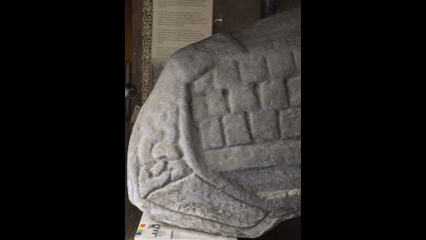MSc Heritage Visualisation School of Innovation & Technology
Haiyu Cheng

Hello, I am Haiyu Cheng. I have always been passionate about cultural heritage, history, and immersive technology. Over the past year, I have honed my skills in heritage digitisation and 3D modelling, and have used the assets I created for gamified presentations. I am currently exploring the digital communication of cultural heritage. I enjoy using digital technology and narrative design to create engaging cultural exhibition experiences.

Cultural Communication of Intangible Heritage through Digital Tools: A Case Study of Lord Rabbit
My master’s research is an augmented reality experience project based on the intangible cultural heritage of Beijing’s Lord Rabbit. The project aims to explore the role of digital technology in the communication of intangible cultural heritage. The project consists of three parts: an animated film about the legend of Lord Rabbit, a cultural promotion handbook, and an augmented reality display application.
I used photogrammetry technology to capture and record the physical clay model of Lord Rabbit, creating a digital replica of this culture. Additionally, I created an animated video of the Lord Rabbit legend using Chinese ancient painting collections and produced a cultural promotional handbook. These resources were used to build an engaging digital experience project for intangible cultural heritage.
The results of an anonymous questionnaire survey in this research demonstrated the positive effect of digital technology in disseminating intangible cultural heritage. Furthermore, digital technology can enhance users’ curiosity and engagement with culture. The dissemination of intangible cultural heritage is not only about enhancing public awareness but also about ensuring the sustainability of its protection and transmission.
hush-hush hogbacks: exploring govan’s medieval monuments through interactive visualisation
Not much can be said with certainty about the hogback. They are early-medieval monuments found across northern England and southern Scotland, with the largest being found here, in Govan, Glasgow. But why were they made? By whom? What do they represent? Supposedly they are of Scandinavian heritage, yet there are no examples in Scandinavia; presumably they are funerary monuments but without human remains; they are carefully designed yet of unclear archetype. With no definite answers, not only were these puzzles intriguing to the Govan Pebbles team, but they also highlighted the challenge of conveying archaeological uncertainty to the public.
We created an interactive visualisation in Unity to address these issues, where we introduced the hogbacks and presented three theories of what they might represent, employing a mixed-media approach of 3D models, videos, text, and audio. The user is asked to employ critical thinking to choose between these, illustrating the open-ended nature of archaeological research. The visualisation finishes with a video discussion of what this uncertainty means for archaeology at Govan and beyond and therefore, we simultaneously address the fascination of the stones and the deeper question of what it means to ‘know’ in archaeology.












